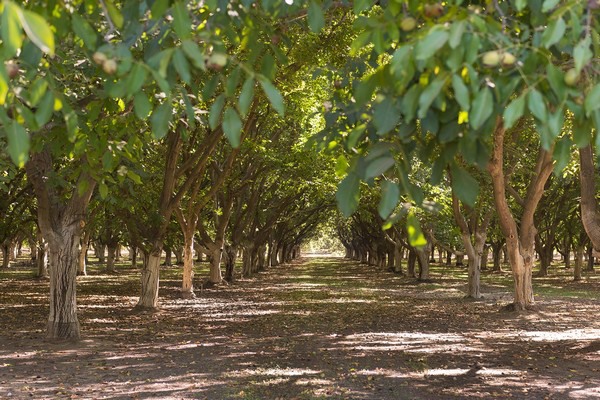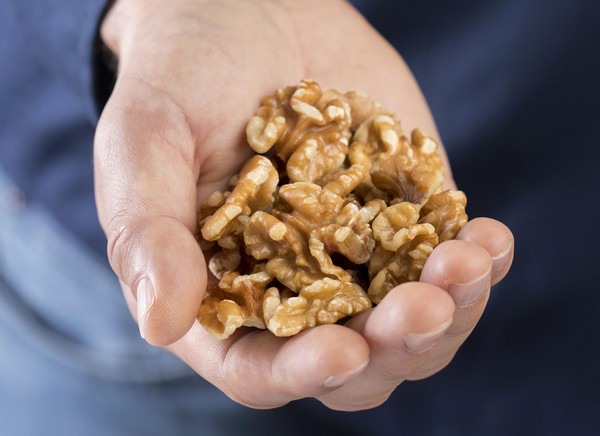An expanded approach for California walnuts. That is what the California walnut industry is embracing as it manages supply chain challenges and a sizable 2022-2023 walnut crop and looks at expanding its focus for the coming year.
“The final crop number has yet to be determined but it’s about 745,000 tons of walnuts, which is similar to last year’s numbers,” says Robert Verloop, executive director and CEO for the California Walnut Board and California Walnut Commission. “We have seen a steady increase over the last few years as plantings over the last decade come into full maturity.”
However, the carry in from the 2021-2022 crop was larger than the industry had hoped for at approximately 130,000 tons. This was partly the result of supply chain issues earlier in the year. “All that product that normally would have shipped January through May ended up being shipped later into the year so it compressed the amount of product available and it will overlap with the 2022 crop,” says Verloop.
 There has been a steady increase over the last few years in tonnage as plantings over the last decade come into full maturity.
There has been a steady increase over the last few years in tonnage as plantings over the last decade come into full maturity.
Top walnut producing regions
With California producing 99 percent of the U.S. production on walnuts, that’s a lot of nuts. The U.S. follows China as the largest producer in the world with the third largest being Chile. Local production also takes place throughout Western and Eastern Europe, though those countries also import product.
However, demand has somewhat slowed down on nut consumption, even with consumers eating healthier thanks to COVID. “What’s put the brakes on demand is the economic situation globally. People have not been as eager to purchase walnuts or other nuts because they look at them as being more expensive than other alternatives. They’re actually good value for the nutrition people are getting,” says Pam Graviet, senior marketing director international for the Commission, adding that walnuts are a good source of plant-based Omega 3s, protein, fiber and more.
While globally the International Dried Fruit and Nut Council has noted a softening of nut consumption, expectations are that it's not going to stay that way. “We see this growth curve starting again but the question is when? When economies recover, people will be more willing to spend on things other than the basics so ultimately, long term we do see this growth continuing,” says Graviet.
 Left to right: Robert Verloop, Pam Graviet
Left to right: Robert Verloop, Pam Graviet
Markets to explore
To galvanize consumption, the Commission is taking a few key steps. Via its own funding and the USDA’s Market Access Program (MAP), it has targeted nine markets for sales growth including Western Europe, the Middle East, Canada, Japan and Korea. It’s in these markets where it will enhance its integrated marketing approach which includes public relations, advertising and in-store promotions.
It also continues to focus on improving domestic consumption. “We are adding additional emphasis to the domestic and the North American market,” says Verloop. “Over the last couple of years we’ve not had an active merchandising program building in-store promotions so we’ve restarted that program. We are also involved in other programs with the Produce for Better Health Foundation and the Culinary Institute of America. Part of this is driven by our vision of expanding displays and promotions of walnuts in the produce department away from being seen as only a baking or mixed nut item. We have seen that when actively promoted and co-marketed, sales of walnuts will jump up. With minimal shrink and all the health benefits, walnuts have tremendous potential to drive profitable sales in produce.”
With a look at the culinary, foodservice and ingredient channels, it also means reimagining walnuts and moving it towards a more center-of-the-plate item such as a meat substitute and some of the innovation being seen overseas with walnuts. In the U.S., a new shelf-stable product is available that, when water is added, can be used as that meat substitute. However, walnuts are also being used as walnut milk, walnut butters and more in many countries. “It's about providing that education and inspiration to consumers and chefs to think: hey, we can use walnuts this way too. We do a lot of that through recipe development, seminars, cooking demonstrations, etc.,” says Graviet.

Reexamining presentation
It also means rethinking the presentation of walnuts to consumers via new packaging innovations and sizes. “We hope to explore pack sizes that are more portable, on the go easy snacks. A smaller package can create more of an urgency to just grab and go,” Verloop says. Even with pricing on walnuts at the retail level staying similar in the past two years (though on the wholesale side, it’s been more volatile), new packaging sizes will offer new pricing opportunities.
Perhaps also new promotional opportunities. Walnuts in the domestic market aren’t an item traditionally promoted and given the volume of the crop, promotable pricing will be available. “We’re also working hard on finding co-promotions partnerships–so dates, other dried fruits, apples, pears, blueberries and other produce items such as lettuce for salads. Having that as an additional promotional tool changes the price point perception and really increases the perceptive value,” says Verloop.
 For more information:
For more information:
Robert Verloop
Pamela Graviet
California Walnut Board & Commission
Tel: +1 (916) 932-7070
[email protected]
[email protected]
https://walnuts.org/
